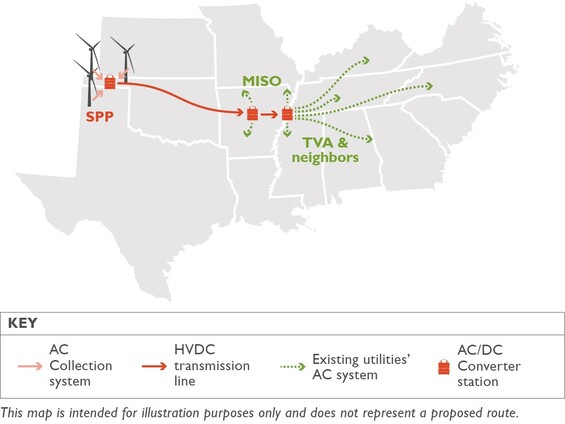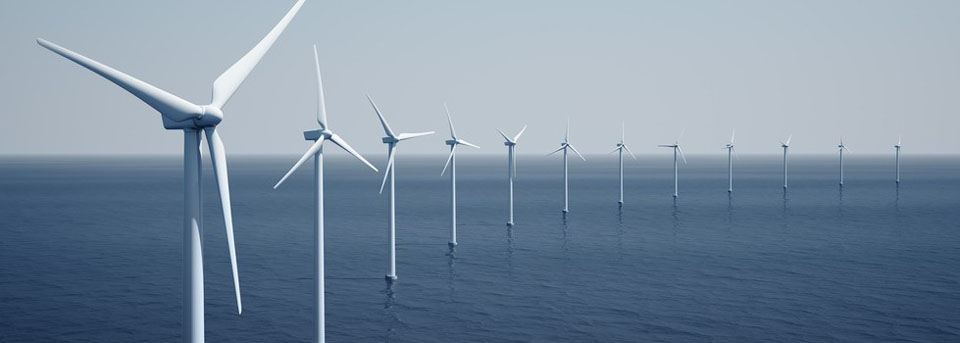DOE Approves Critical Transmission Project
DOE approves critical transmission project to deliver energy bill savings to more Americans
Connects lowest-cost wind energy to densely-populated hubs
March 25, 2016
Washington, D.C. — More low-cost, clean wind energy will soon be available to American homes and business as the U.S. Department of Energy (DOE) today approved America’s largest clean energy infrastructure project this century.
DOE’s approval of Clean Line Energy’s Plains & Eastern Line transmission project, utilizing Section 1222 of the Energy Policy Act of 2005, enables the project to move forward and is consistent with bipartisan calls to expand our nation’s energy infrastructure. The proposed project will deliver the output of 4,000 megawatts (MW) of clean, low-cost wind energy from the Oklahoma panhandle to customers throughout the Southeastern U.S. – delivering more than four times the electricity output of the Hoover Dam.
“The U.S. Department of Energy’s decision is a critical milestone that opens the door for billions of dollars in private investment. The project supports economic opportunity often in rural areas that need it most and potential energy bill savings for Americans,” said Tom Kiernan, CEO of the American Wind Energy Association. “This approval exemplifies DOE’s strong leadership in supporting a clean, affordable and reliable energy future.”
Section 1222 of the Energy Policy Act of 2005 was passed with bipartisan support and was signed by President George W. Bush to address the nation’s changing energy needs. Section 1222 of the Act is intended to foster private sector/public sector cooperation to build new transmission projects.
“Over 99 percent of all installed utility-scale wind capacity is located in rural areas. By building more projects like this, we’ll be putting America’s abundant untapped wind resources to use,” continued Kiernan.
The Plains & Eastern transmission line is a $2.5 billion dollar private investment that will create the opportunity for over $7 billion dollars in new wind farm development, establishing thousands of jobs and supporting hundreds of manufacturing jobs. In total, wind power has attracted $128 billion in private investment to the U.S. economy over the last decade.

Map showing the route of Clean Line Energy’s Plains & Eastern transmission line
Building new transmission infrastructure like the Plains & Eastern Clean Line is also expected to help many states, particularly in the Southeast, more cost-effectively comply with EPA’s Clean Power Plan. A recent journal article found that inter-regional high-voltage direct current (HVDC) transmission lines to connect wind generation, like Plains & Eastern, are a highly cost-effective way to reduce carbon emissions.
Completed transmission projects in other parts of the U.S. have demonstrated the benefits of connecting areas with abundant wind resources to more highly populated parts of the country.
For example, the Competitive Renewable Energy Zone (CREZ) lines in Texas have allowed the state to double its use of low-cost wind energy. ERCOT, the main grid operator in Texas,has regularly set wind generation records on its system as a result of CREZ. At one point onMarch 23, over 48 percent of the electricity on the main Texas grid came from wind energy. ERCOT has also announced that wind surpassed nuclear in total generation by supplying 11.7 percent of the overall power mix for all of 2015.
Other regions are following Texas’s lead. The Midcontinent Independent System Operator (MISO) is developing a similar set of transmission lines, called the Multi-Value Projects, which will potentially integrate nearly 15 gigawatts (GW) of new wind capacity. Those projects are expected to yield a benefit-to-cost ratio of between 2.6 and 3.9 to 1.
A recent study by the Southwest Power Pool, which manages the grid in 14 states across the central U.S., shows power line upgrades deployed from 2012 to 2014 provided benefits of around $600 million in the first year alone, or nearly $2 million dollars per day. Overall, the benefits of those lines will total more than $16 billion over 40 years, 3.5 times greater than their cost.
Thanks to American innovation, the cost of wind power has fallen by two-thirds over the last six years. That’s helped make wind energy the lowest cost source of new generation. During the 2014 Polar Vortex, wind energy saved consumers $1 billion over just two days by acting as a hedge against volatile fuel prices.
Source: awea.org
